One of the most effective techniques you can use in underwater photography is Close Focus Wide-Angle Photography (CFWA). The technique relies on the ability of wide-angle lenses to focus very close to a subject, often just a few inches away.
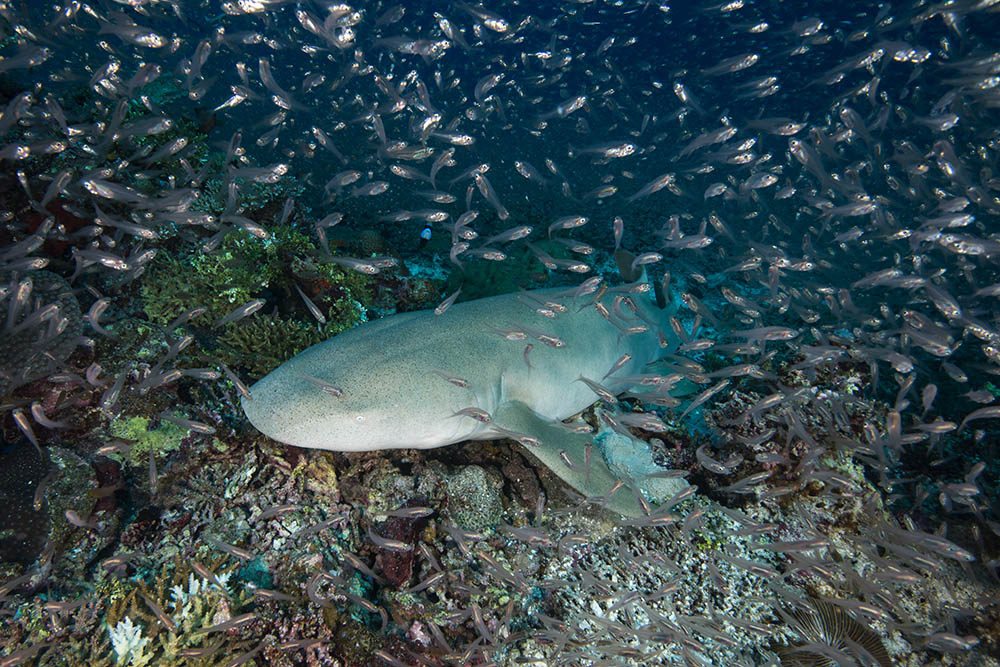
Ideally I’d have gotten a little closer to this Nurse Shark, but it turned tail and fled seconds after I took this shot
Generally, photographers use ultra-wide lenses such as the Nikkor 10.5 fisheye or the Tokina 10-17mm to achieve the effect. I’ve used the Nikkor 10.5, as well as the Sigma 10-20mm, and both have been very effective. I now tend to shoot using the Nikkor 16-35mm. While this doesn’t go as wide as the fisheyes (it’s a rectilinear lens), it does have superb sharpness at the edge of the frame (always something to consider behind a dome port) and it’s very useful to have a little bit of range to zoom in, should a shark or turtle arrive on the scene. It’s a good compromise and on my full-frame Nikon D800, it’s wide enough. Compact cameras with auto settings should be set to ‘macro’.
To succeed with this technique, you need to first identify a strong foreground subject. As you can see here, I have a fondness for anemones and their resident clownfish. They’re colorful, a useful size, and above all they don’t disappear into the reef the moment you get close.
CFWA allows you to get the foreground subject in focus, but also to capture the background, using a wide-angle lens to achieve a large amount of depth-of-field, when a narrow aperture is set, like between f11-f16.
The thing to remember here is how your strobes work in conjunction with your exposure settings. Your strobes will illuminate the foreground but will do nothing for the background, which means that strobes should be set to manual and you should adjust your shutter speed to control the background exposure.
It sounds complicated, but it isn’t really, once you’ve practiced. Messing around in a pool with a few children’s toys is not a bad way to gain some experience.
Once you’ve mastered the technicalities, you can spend more time on composition. You’ll see that many images are taken on the same level of, or slightly below, the main subject; this means you can capture ‘the blue’ and perhaps a sunburst or passing divers.
Getting close means you must be careful not to damage the reef. I’ve known many photographers who will invert themselves to ‘stand on their heads’ to keep their body away from the reef. This is not only a considerate approach, but it means you’re less likely to disturb particulates which will require removal post processing. So make sure you are correctly weighted and can control your buoyancy.

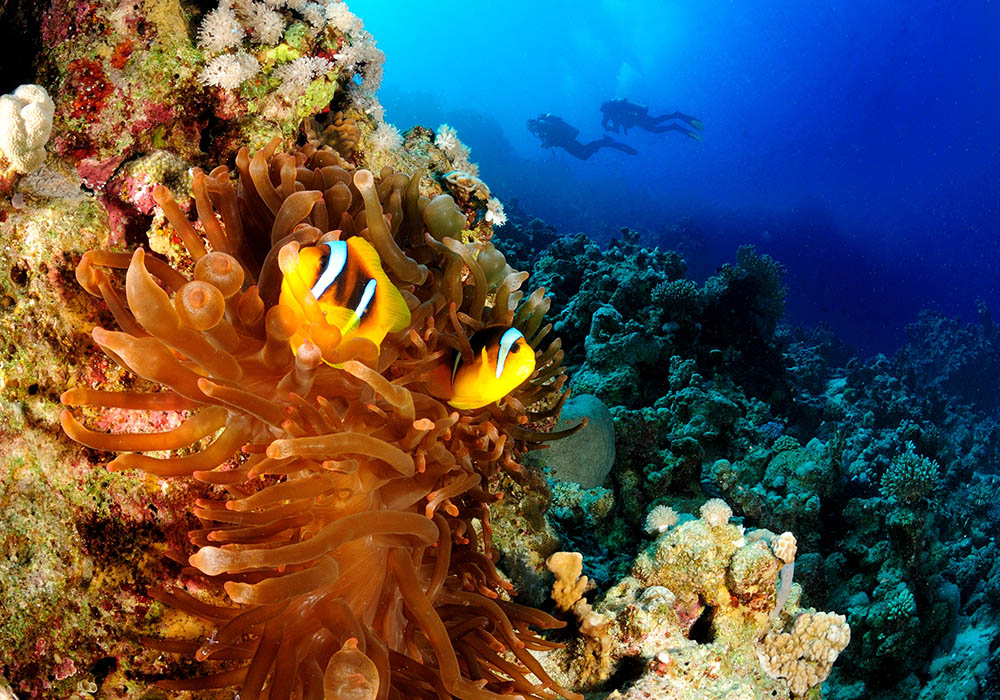
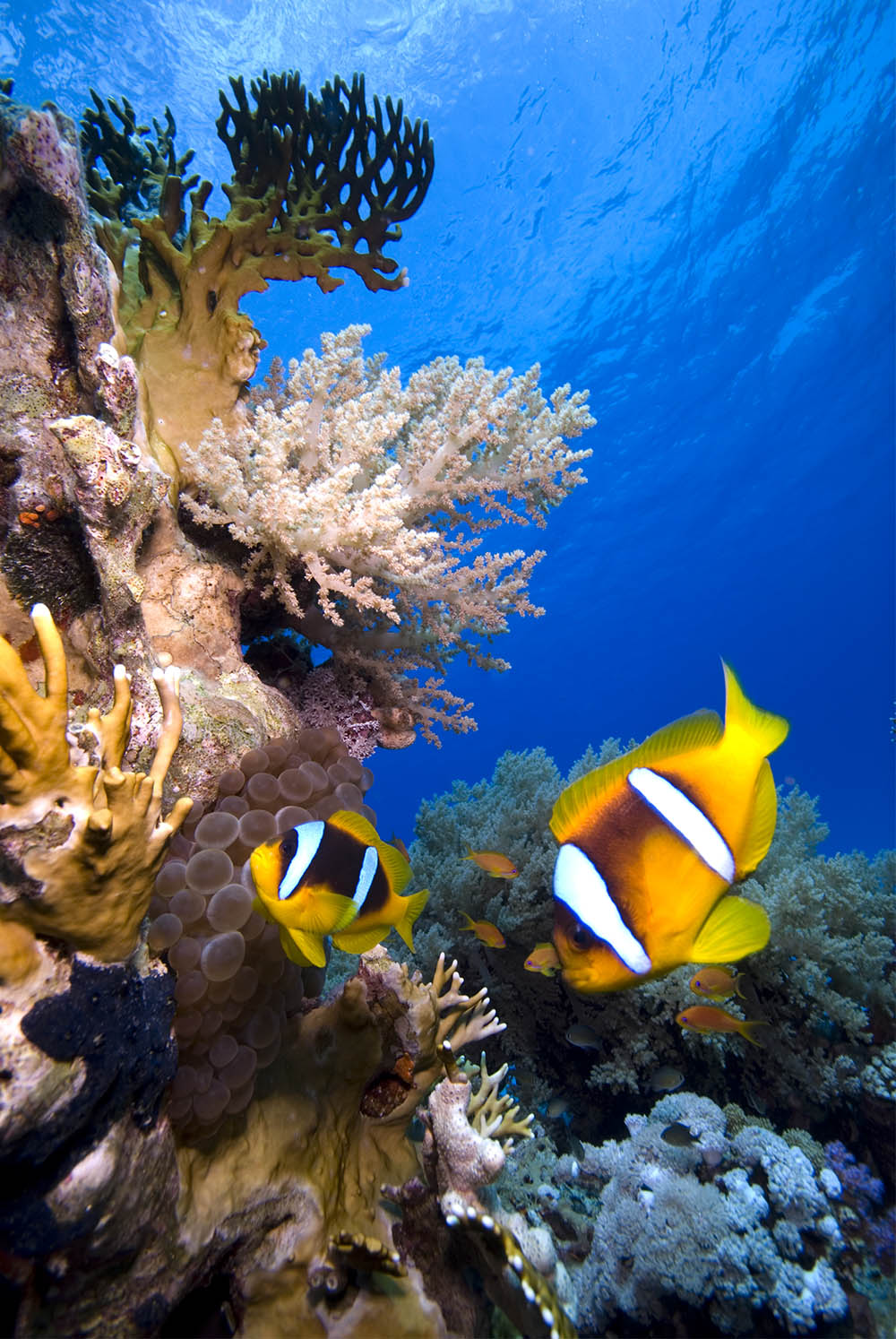
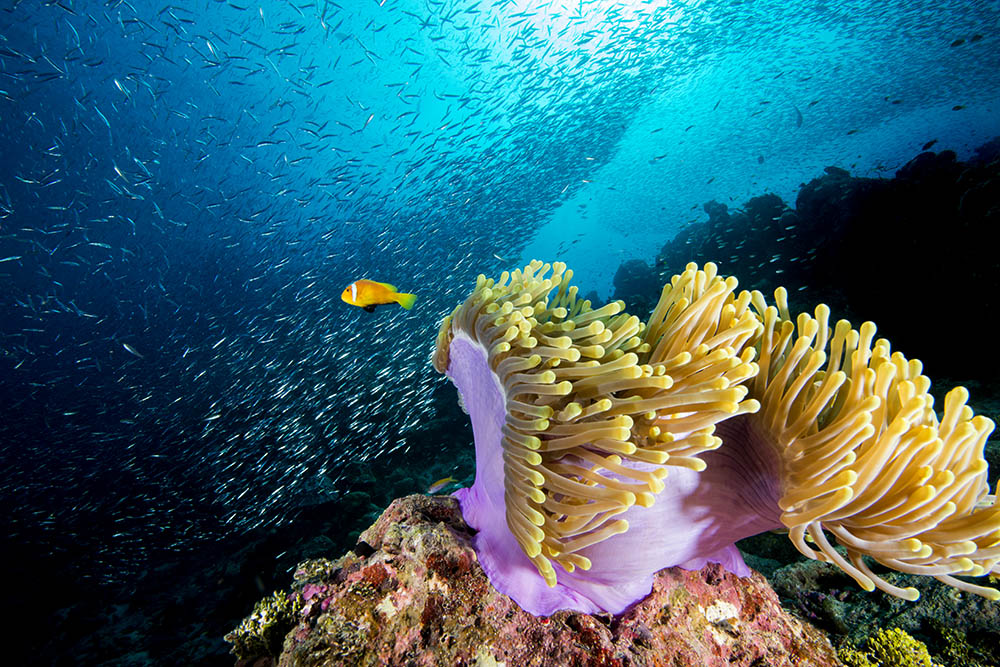
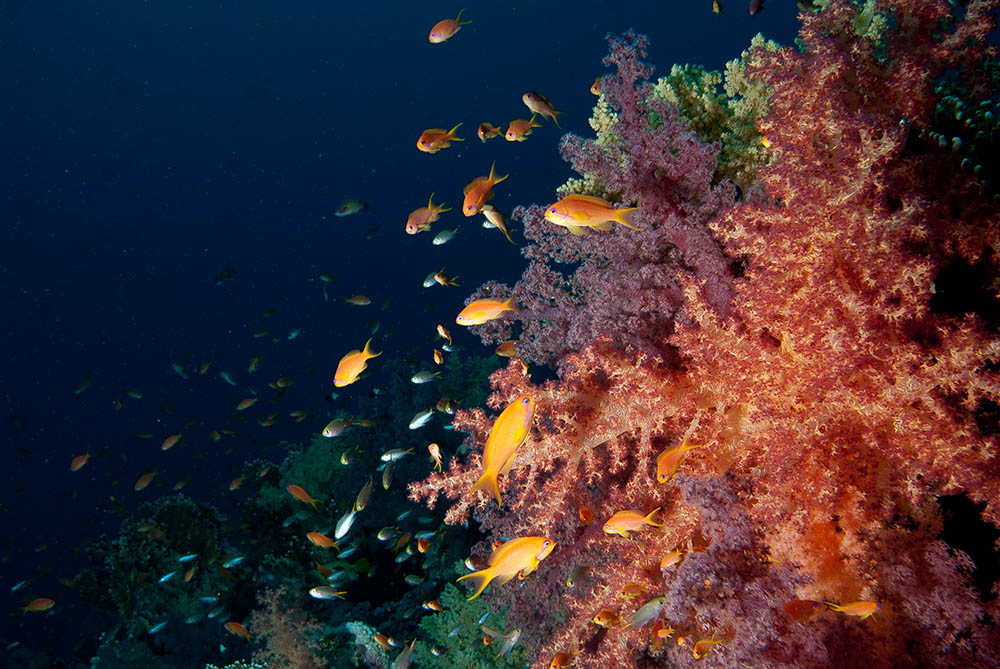









0 Comments